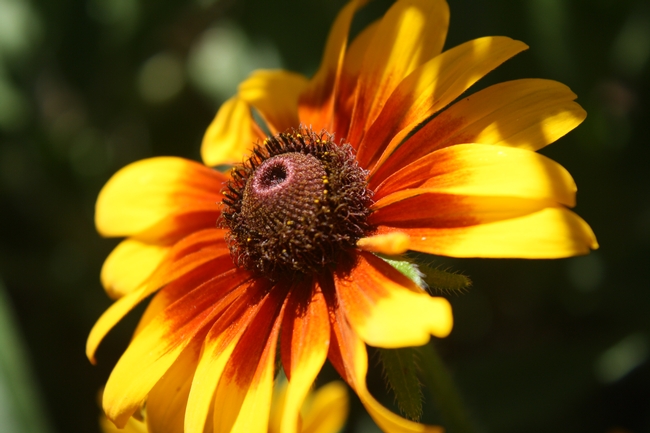- Author: Karen Metz
I've always been enchanted with Naked Ladies, the pale pink flowers that seem to magically appear in late summer. Several years ago they were offering bulbs at a Master Gardener Plant Exchange. I picked up one of the coconut sized bulbs and decided to give it a try.
I did some research and found the experts said the bulbs didn't like to be moved so it might be a while before they bloomed. Okay... Next year lovely strap like leaves, but no flowers. Ditto for year number two. This year, lovely spring leaves that died to the ground, and then, in August , stalks with large terminal bulbs seemed to appear overnight. The stalks shot up rapidly then beautiful pink flowers unfurled.
The common name, Naked Ladies, comes from the fact that there are no leaves present when they bloom. The plant is also known as Pink Lady, Resurrection Lily and Magic Lily. It's not a lily, but is in the Amaryllis family. I'm just happy the ladies finally arrived!
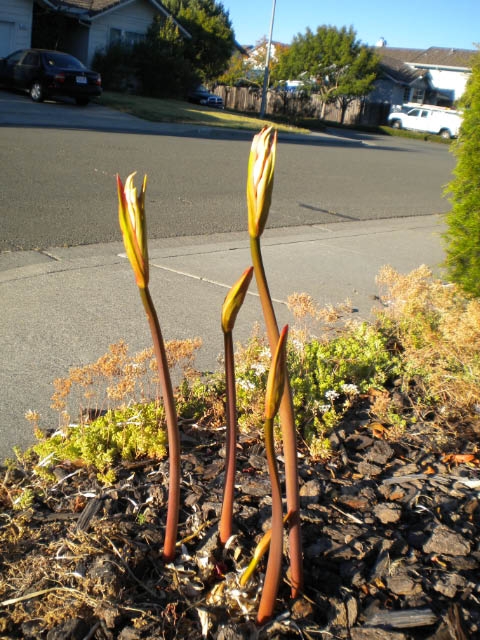
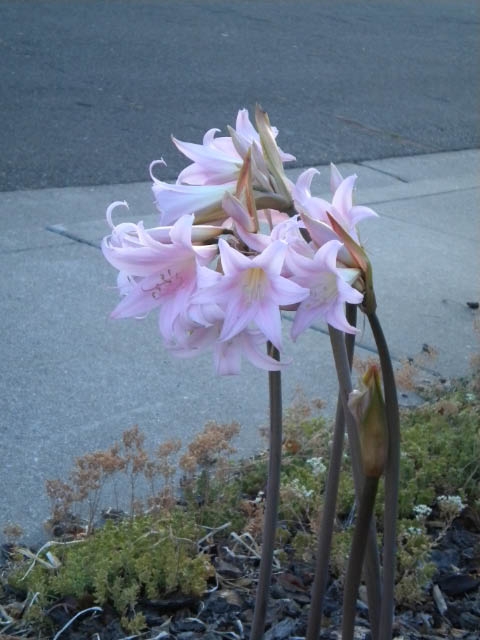
- Author: Sally Livingston
After attending a session on succulent container gardening at UC Davis, I decided to try it. This is my first attempt. When I purchased the succulents, I thought it would be too crowded in the planter but there is space. As they grow, I think it will fill it, but if not I plan to add some other succulents.
There are many kinds of succulents and I just got a few different ones. They have shallow roots so I put rocks in the bottom of my planter. Then I used packaged soil designed for succulents or cactus mix. It is more porous that the usual potting mix and helps retain water for longer periods. This one is located at the entrance to our gazebo and gets morning and early afternoon sun then some shade. It seems to be doing well. I water it about every two weeks slowly with at least a quart of water. But if I forget they are very forgiving. This winter I will move them to a sheltered area when frost is in the forecast.
You might want to try this type of gardening. There are so many different and variety of plants that it is fun to select a interesting combination for your container. And it doesn’t require a lot of care or frequent fertilizing.
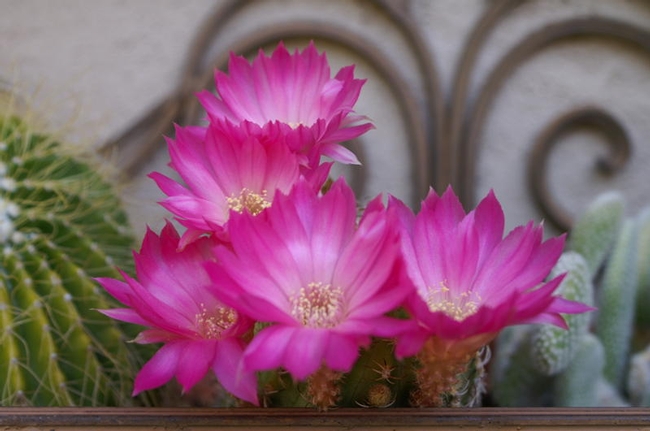
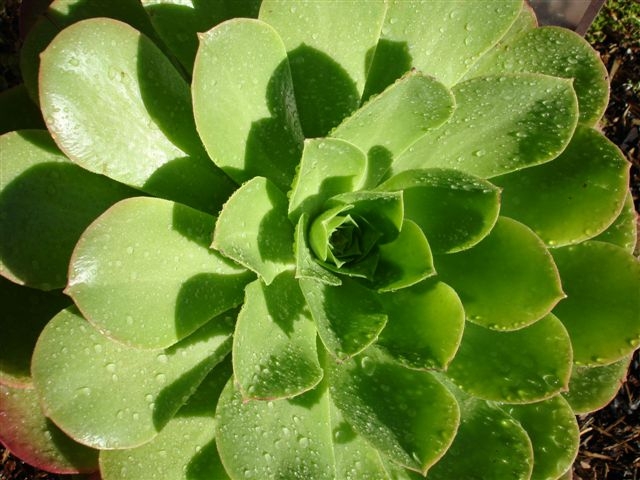
- Author: Patricia Brantley
So here it is, a day off. In 1894 an act of Congress made the 1st Monday in September an American holiday. Celebrating the contributions workers have made to the societal and economic growth of our great country. But while many take a well earned day off to relax and enjoy, there are those of us that will be laboring. I mean, the bees don’t take a day off (thankfully) they keep doing their chores and pollinating. The worms keep the soil moving. The grubs and aphids keep doing their thing, albeit it’s not so helpful. So too we gardeners will keep doing our thing, pulling weeds, amending veggie beds, watering, chasing off the “bad guys“, checking those tomatoes to see if they’re finally that perfect shade of red (or green, or purple, or yellow, etc.). We can’t help ourselves! Congress gives us a day off and we look at it as a chance to catch up or start something new. So my morning will be spent scouring for upstart weeds, amending beds and starting those cool season (fall/winter) crops. I’ve thoroughly reviewed the planting schedules,. The best one I’ve found is the one by Dr. Robert Norris, Emeritus, U.C. Davis. Full color and easy to read it is a big help. http://ucanr.org/sites/gardenweb/files/29042.pdf. As the day heats and the sun beats, I’ll probably head inside to cool down with some homemade lemonade and peruse a garden magazine for some more inspiration. I’d like to have a taste of summer later on when winter comes along so I think I’ll give storing and preserving a try this year for the first time. I do know that I won’t have to guess how to preserve each item since the Master Gardeners already have a chart for that too! http://ucanr.org/sites/gardenweb/files/29040.pdf. By that time it’ll be evening and time for one more stroll around the garden, notice the buds that I expect to see open tomorrow and see if there’s any fruit or vegetable that ripened up just a bit more and can maybe make it to my dinner plate.
A day off for a gardener? Maybe from “work“, but for a gardener, happily, every day is Labor Day.
- Author: Kathy Thomas-Rico
What’s going on with the white birches? Seems as if an awful lot of them are dying. From my front window, I can count three, good-sized DEAD European white birches (Betula pendula). Their leafless, bone-white branches stand in stark contrast to the seemingly healthy hackberries and redwoods and oaks around them.
Alas, this is old news. White birches have been dying off during our hot summers for a long as we have persisted in planting them here. White birches are lovely, and popular in our area. But, they come with a list of issues of which we all should be aware:
- European white birches are native to, well, Europe. Specifically northern Europe, where there are cooler climes and plenty of rainfall to sustain the trees. They grow magnificently there, and to their full potential, much larger than any you’ll see in Solano County.
- When birches get stressed during our Northern California summer droughts, borers move in. The bronze birch borer, Agrilus anxius, is the main culprit. Apparently there is quite a large local population of the borers. Intensive insecticide applications will keep them at bay. Check the University of California Statewide Integrated Pest Management website for more information: http://www.ipm.ucdavis.edu/PMG/GARDEN/PLANTS/birch.html
- Birches are thirsty trees. And the amount of irrigation must grow with the tree. Often, birches — as well as other thirsty trees, such as alders and maples — thrive in well-irrigated lawns areas.
- Even in the best growing situations and climate, birches are not long-lived. You’d be lucky get 30-40 years from a European white birch.
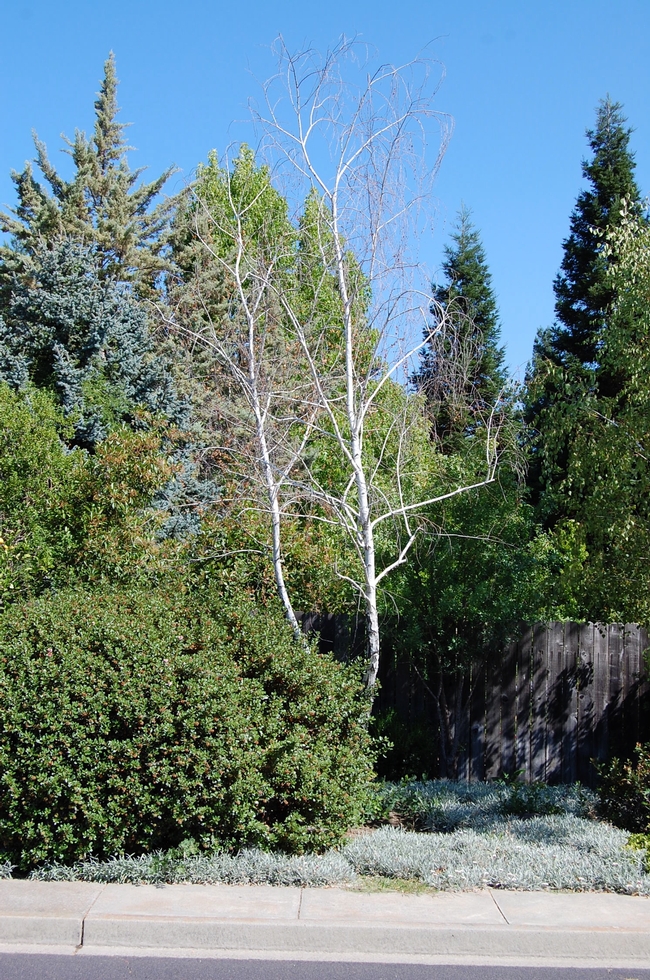
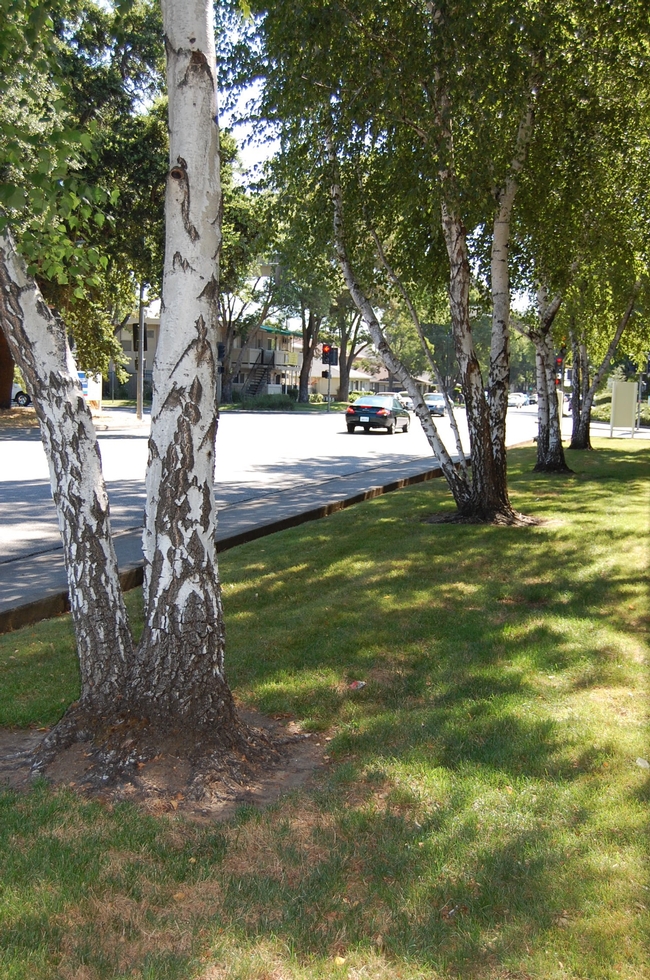
- Author: Jennifer Baumbach
Thank you for joining the Master Gardeners (MGs) as they share with you their knowledge and experiences of gardening in Solano County.
If you aren’t familiar with our program, let me fill you in. The MGs are residents of Solano County. They are a diverse group of people who have been trained in horticulture for the purpose of volunteering their time to share that knowledge with you, the home gardener.
Each weekday, this blog will cover a new topic, something of interest to the writer or an interesting tidbit he or she has discovered in his or her home gardens or in other parts of our county.
We are excited about sharing this blog with you and hope you enjoy reading about everything Under the Solano Sun.
